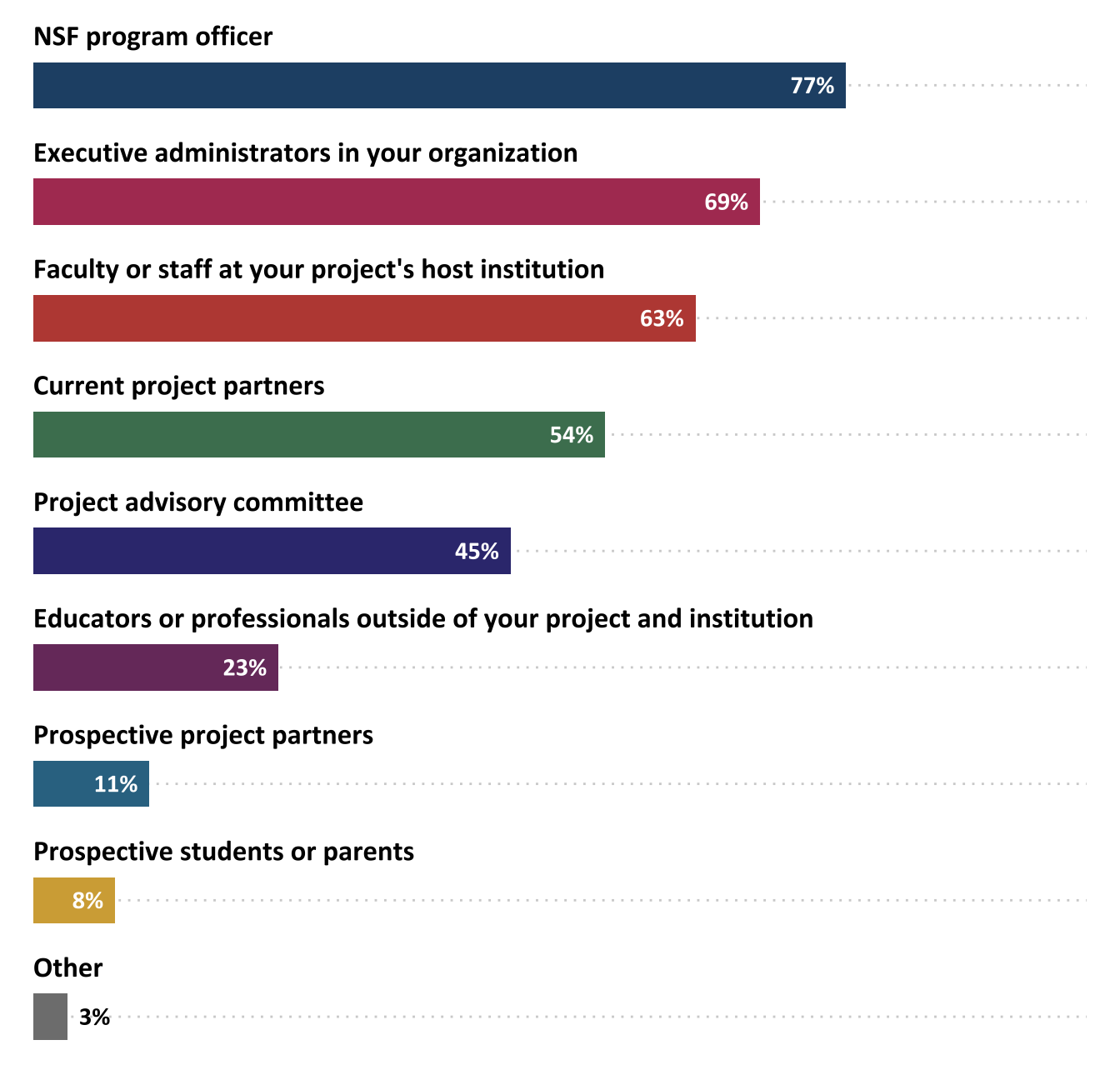
Chapter 11 Evaluation
11.0.0.0.1 Each ATE project is required to have an evaluation component to assess its quality and effectiveness. Evaluation of ATE and other NSF-funded projects is intended to serve two distinct purposes: (1) Produce information that can be used to improve a project as it is being implemented and (2) Determine and document a project’s achievements (Frechtling, 2010).
11.0.0.0.2 ATE PIs were asked about their evaluators and interactions with them, as well as their projects’ use and dissemination of evaluation results.
11.1 Evaluation
11.1.0.1 Ninety-three percent of ATE projects engaged an evaluator.
Two hundred ninety ATE projects had evaluators in 2023. Of the 22 PIs who said they did not have evaluators, 12 were in their first year of funding. Of the 290 projects with evaluators, 90% reported having an external evaluator, with 7% having both an internal and external evaluator and 3% having only an internal evaluator.
Thirty-two percent of PIs reported that they interacted with their evaluators continually (at least once a week) or often (two or three times a month), while 44% interacted with their evaluators occasionally (more often than quarterly) and 16% did so infrequently or rarely (once a quarter or less).
11.1.0.1.1 More than half of ATE projects received both oral and written evaluation reports.

Figure 11.1: Types of evaluation report received by ATE projects (n=290)
Of the 256 PIs who received evaluation reports, 53% indicated their project’s evaluation caused them to make a change in implementing their project, and 46% indicated that the evaluation caused them to make a change in their project’s goals, objectives, or target audience.
